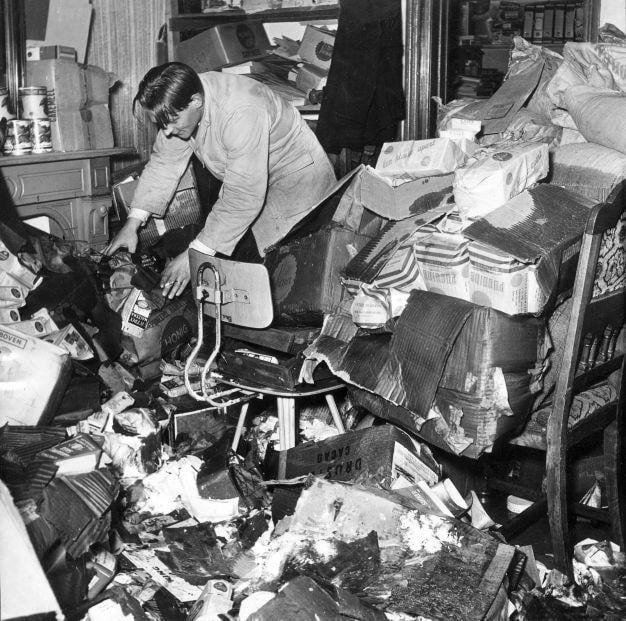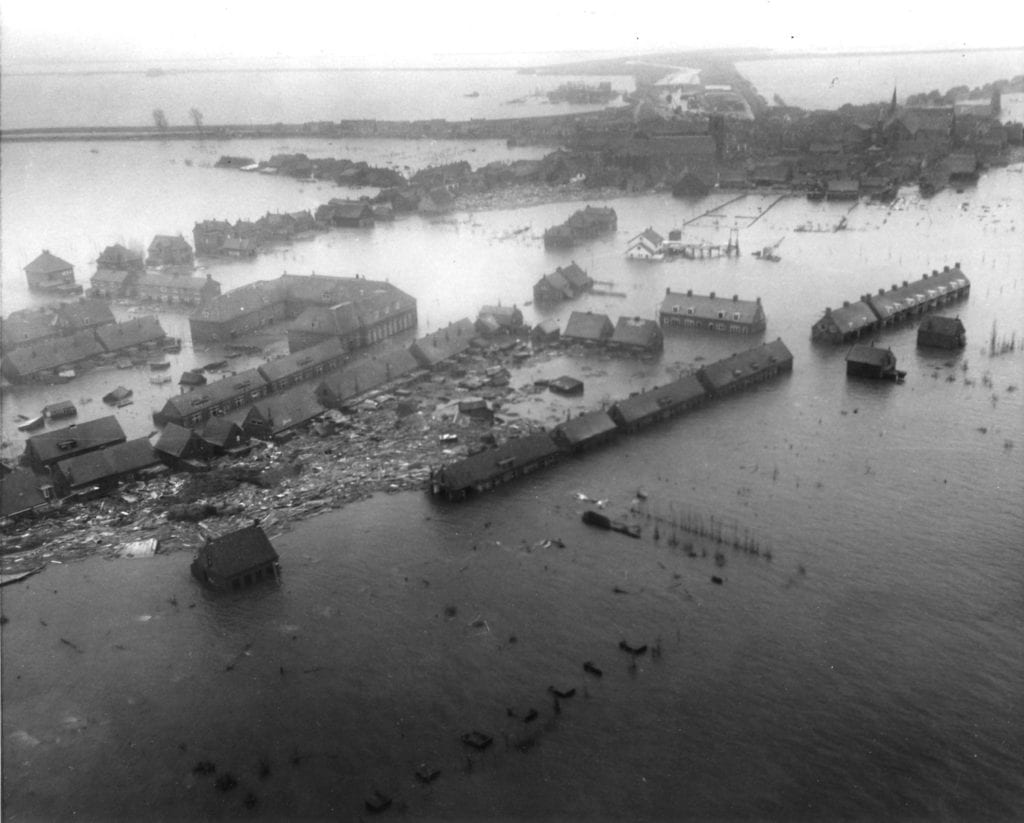On February 1, 1953, one of the biggest natural disasters to ever hit the Netherlands took place. We’re talking about the Watersnoodramp, the largest flood that ever took place in the Netherlands.
It was a Saturday night, January 31, 1953, when the flooding began, continuing into Sunday morning. A storm surge hit the Netherlands, as well as the east coast of England, Belgium, and Germany.
As a result of the Watersnoodramp, over 2,100 people died across three countries, with more than 1,800 of them being in the Netherlands. Apart from the lives lost, this tragedy caused chaotic damage to livestock and homes.
How did the Watersnoodramp happen?
The North Sea is shaped like a funnel, so when a storm breaks from the north or northwest and pushes the water southward, it cannot drain. This causes the water to build up and raise the sea level further.

It’s no surprise, then, that the 1953 flood was not the first one. A similarly tragic flood happened in 1916.
On Saturday, January 31, the KNMI (Royal Dutch Weather Institute) issued a bad weather warning for the night of Saturday to Sunday: On top of spring tide, which caused the water level to be higher than normal, a northwestern storm was on its way to the Netherlands.
Adding to this, the wind pushed the water up to rise higher and higher, making the sea reach a record height of four to five meters above the average sea level.
READ MORE | The Dutch build cities on sinking land: how will this fare with climate change?
The first dikes were breached between 4 AM and 6 AM on Sunday, February 1, by the storm surge. In a short amount of time, 165,000 hectares of land were covered by seawater.

Many people were caught unprepared — while some hadn’t heard of the warning, others chose to ignore it. Among the people who did get the news about the storm, about 72,000 people were evacuated.
After the flood
The consequences of the Watersnoodramp were dramatic.
Roads were destroyed, and telephone lines were down. In many regions, the only transportation possible was by boat. Cattle died in droves, crops failed, and thousands of homes became uninhabitable.
Most tragically, more than 1,800 victims perished in the Netherlands as a result of the flood, while another 105 were never found. Several unknown bodies were also buried in the days after the disaster.
The total estimated damage due to the flood was around 1.5 billion guilders, which is equivalent to around €5.4 billion today.

The 1953 flooding in the rest of Europe
The Netherlands was not the only country that felt the devastating effects of the 1953 flood. Countries like England, Belgium, and Germany were also badly hit.
According to the British Environment Agency, 300 people died in the UK, about 24,000 houses were destroyed, and 40,000 people were evacuated.
In Belgium, several dikes were breached, and areas of Ostend and Antwerp were flooded. Around 40 people lost their lives.
The Delta Works
After the disastrous results of the Watersnoodramp, it was unanimously agreed that protective measures be taken not just in the Netherlands, but in all of Europe. The iconic Thames barrier in Britain is one of the results.
READ MORE | Why the Netherlands isn’t underwater (VIDEO INSIDE)
In the Netherlands, the ideas were grander, and the Dutch government introduced Delta Works, a series of construction projects aimed at protecting low-lying areas from flooding.
These staggering marvels of engineering are a big and lasting reminder that the North Sea will always impact the lives of the Dutch. It’s a system that is admired around the world to this day.
The Delta Works is a working process to handle flooding. In September 2008, reports showed that the Netherlands would need a massive new building program to strengthen the country’s water defences against the effects of global warming.
READ MORE | The Dutch built cities on sinking land: how will this fare with climate change?
The plans included drawing up worst-case scenarios for evacuations, and estimated costs at €100 billion. Yikes!
Lastly, here is an original 1953 news report, to show the disastrous effects of the 1953 flood (in Dutch):
Did you know about this Dutch tragedy? Share your thoughts in the comments!
Feature: Agency for International Development/Wikimedia Commons/Public Domain






Thank you for this article. I remember the time.
Small technicality, the flood of 1953 was the biggest in modern times.
There’s at least two which were bigger;
St Elisabethsvloed 1421 – creating the Biesbosch and likely the moast deadly one
The flood of somewhere around 1000 creating the Zuiderzee (currently known as the IJsselmeer
I was there.
Welgedaan
My father was one of the helicopter pilots
My Mother had a baby 2 days later in Dordrecht. My sister. I arrived on the scene a few years later in Canada. Thank you for this article.
My mother often mentioned this tragedy but never went into much detail about it. The footage has helped me understand the enormity of it much more. Thank you for posting ….
I recall my Opa working on the Moordijk after the floods. My family lives in the UK and I was only 3 at the time so this was really helpful to me to learn more about what happened and why.